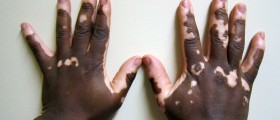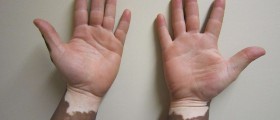
Even the most careful individuals who use sunscreen lotions and cosmetic products of best quality will eventually have to face certain skin changes. Changes in skin pigmentation are common for many conditions affecting the skin and they also occur as a part of normal process of skin aging. So, having hyperpigmented skin or hypopigmented skin may not be associated with some serious conditions but it can also point to skin changes that eventually lead to even more complex problems.
Skin Hyperpigmentation
Hyperpigmentation is the term that refers to darkening of the skin, which may affect different parts of the skin, be scattered or in a form of one skin lesion. Hyperpigmentation is explained by the accumulation of melanocytes (skin cells containing the pigment melanin) in the specific area. Even though this is actually the most frequent reason behind skin hyeperpigmentation, the explanation why melanocytes accumulate may vary from one patient to another.
In the majority of cases, hyperpigmentation affects dark-skinned individuals. It also occurs in people with olive complexion and is more reported in women than in men.
Types of Skin Hyperpigmentation
First of all, skin hyperpigmentation is a normal reaction after each and every skin inflammation. So, people suffering from acne, rash, scratch marks and any kind of skin injury face hyperpigmentation of the affected area.
Secondly, pregnant women are prone to specific skin hyperpigmentation called melasma. They develop dark spots, predominantly on the cheeks, forehead and upper lips. The skin changes develop as a result of intraepidermal and dermal accumulation of melanin and are thought to be connected with hormonal imbalance.
The skin is also affected by lentigines, small pigmented spots with a clearly defined edge. They represent a skin reaction towards harmful sun rays and are frequent in individuals who are prone to excessive and unprotected sun exposure. These skin lesions and hyperpigmentation are sometimes precancerous and may eventually progress into skin cancer. Because of that any change in appearance of lentigines must be reported.
Finally, freckles are one more type of skin hyperpigmentation. These small patches of hyperpigmented skin usually affect young people with light complexion and are distributed across the face or even spread to upper parts of the body. These individuals are highly sensitive to sun, prone to sun burns which is actually a reason why they should stay away from the sun.
Hyperpigmentation Treatment
Some forms of skin hyperpigmentation may be prevented by regular application of adequate sunscreen. The cream must be applied on a daily basis especially, during summer months and on the beach. There are many sunscreens and one is supposed to consult with a well experienced dermatologist who will recommend the most convenient type of sunscreen and SPF it should contain. Lentigines are dangerous skin hyperpigmented changes which they require occasional check-ups. Finally, melasma is treated with chemical exfoliation, mechanical exfoliation and laser therapy.

















Your thoughts on this
Loading...